Warehouse Management System’s Efficiency, accuracy, and speed are paramount in the world of modern logistics and supply chain management. Companies that handle inventory and warehousing operations understand the vital importance of streamlining processes to meet customer demands and remain competitive. Warehouse Management System (WMS) is a powerful tool that enables businesses to achieve these objectives. In this comprehensive 5000-word blog post, we’ll dive deep into the complex processes of a warehouse management system, exploring each step and its role in optimizing warehouse operations.
- Warehouse Management System (WMS) – An Overview
- Receipts and Inventory Management
- Order Processing and Selection
- Packing and Shipping
- Reporting and Analysis
- Integration with Other Systems
- Implementation and Challenges
- Future Trends in WMS
- Conclusion
- Frequently Asked Questions:
- What is a warehouse management system (WMS)?
- What are the key features of a WMS?
- How does a WMS improve warehouse operations?
- What types of warehouses can benefit from a WMS?
- How do I choose the right WMS for my warehouse?
- Can a WMS integrate with other systems?
- How long does it take to implement a WMS?
- What are common challenges in implementing a WMS?
- How can I measure the success of a WMS implementation?
Warehouse Management System (WMS) – An Overview
Before we get into the processes, let’s establish a clear understanding of what a warehouse management system is. WMS is a software application designed to automate and optimize various aspects of warehouse operations. It acts as the central nervous system of a warehouse, organizing everything from inventory management to order fulfillment.
It is important to understand the benefits of a WMS. We will explore how it increases efficiency, accuracy, visibility, and cost-effectiveness in warehouse management. Additionally, we will also discuss its role in addressing common storage challenges.
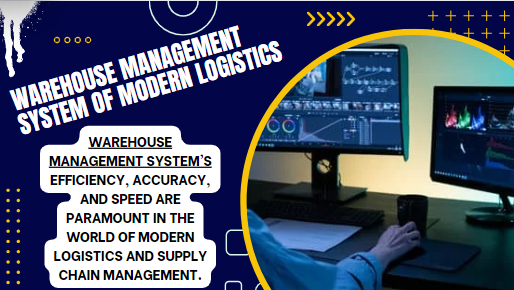
Receipts and Inventory Management
To receive
The journey of products through the warehouse begins with receipt. Here, we’ll detail the processes involved in accepting and documenting incoming shipments. We will discuss the role of WMS in verifying quantities, inspecting the merchandise, and updating inventory records in real-time.
Inventory Management
Accurate inventory management is at the heart of a well-functioning warehouse. This section will cover how a WMS ensures that each item is accounted for, accurately labeled, and placed in the correct location within the warehouse. We’ll also explore how a WMS helps with cycle counting and inventory reconciliation.
Order Processing and Selection
Order Processing
Efficient order processing is critical for timely and accurate order fulfillment. We’ll explain how WMS receives orders, prioritizes them, and creates pick lists. We will also discuss its role in managing backorders and partial shipments.
Choose
The picking process involves selecting the items from their locations to fulfill the customer’s order. We’ll explore how WMS optimizes this process by generating efficient picking routes, reducing travel times and ensuring order accuracy. We will also discuss different selection methods, and how WMS supports them.
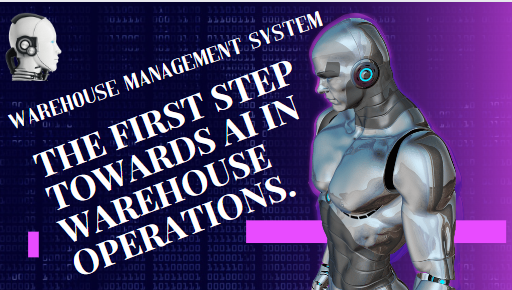
Packing and Shipping
Packing
Packing orders correctly is important to ensure customer satisfaction and reduce shipping costs. In this section, we’ll look at how a WMS helps automate packing processes, ensure the right items are packed together, and prepare shipping labels and documents.
Shipping
Once the orders are packed, they have to be shipped to customers. We’ll explore how a WMS integrates with shipping carriers, prints shipping labels, and tracks shipments in real-time. We’ll also discuss how it streamlines the shipping process for a variety of delivery methods, including parcel, LTL (less than truckload), and TL (truckload) shipments.
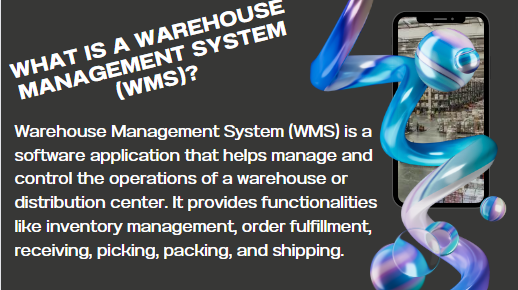
Reporting and Analysis
Data Storage
WMS continuously collects data from various warehouse operations. This section will discuss the data types collected, including inventory levels, order status, and employee productivity. We’ll also explore how WMS captures data through technologies like barcode scanning and RFID.
Reporting
Effective reporting is essential for informed decision-making. We’ll focus on how a WMS produces reports and dashboards to provide insight into warehouse performance. We’ll also discuss customizable reporting features and key performance indicators (KPIs) that are tracked by the WMS.
Analytics
Analytics takes reporting to the next level by providing actionable insights. We’ll explore how a WMS uses data analytics to identify trends, forecast demand, optimize inventory levels, and improve overall warehouse efficiency.
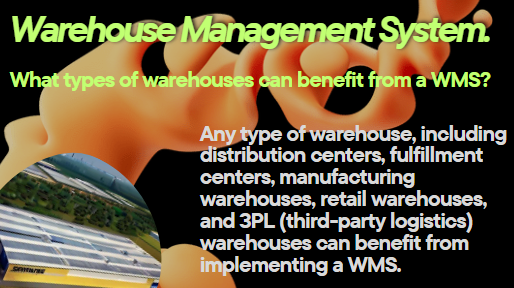
Integration with Other Systems
ERP Integration
Many businesses use enterprise resource planning (ERP) systems for comprehensive business management. In this section, we will discuss how WMS integrates seamlessly with ERP systems, enabling data synchronization and streamlining of operations.
Transportation Management System (TMS) Integration
Coordination of warehouse activities with transportation is critical for supply chain efficiency. We’ll explore how a WMS integrates with a TMS to optimize transportation planning, carrier selection, and shipment tracking.
E-commerce integration
For e-commerce businesses, it is essential to integrate a WMS with their online sales platform. We’ll discuss how WMS facilitates e-commerce integration, automate order imports, and ensures real-time inventory updates for online buyers.
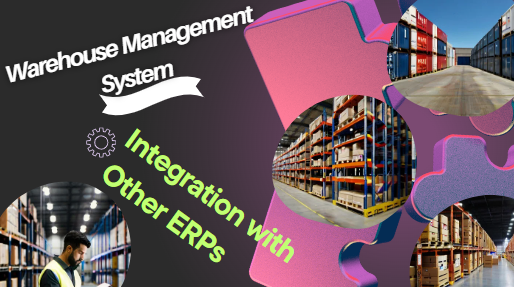
Implementation and Challenges
Implementation Process
Implementing a WMS is a significant undertaking. We will outline the steps involved, from initial evaluation and vendor selection to configuration, testing, training, and finally, the go-live phase. We will also discuss the importance of change management during implementation.
Common Challenges
No implementation is without its challenges. We’ll explore common issues encountered during WMS implementation, including data migration, resistance to change, and integration complexities. We will also give suggestions on how to overcome these challenges.

Future Trends in WMS
Artificial Intelligence (AI) and Machine Learning
The future of WMS is closely linked to AI and machine learning. We will discuss how these technologies will enable predictive analytics, autonomous robots, and advanced demand forecasting.
Robotics and Automation
Automation is a game-changer in warehouse operations. We’ll explore how WMS will continue to adopt robotics for tasks like goods-to-person picking, autonomous forklifts, and palletizing.
Cloud-Based Solutions
Cloud-based WMS solutions are becoming more prevalent. We’ll discuss the benefits of a cloud-based WMS, including scalability, accessibility, and cost-effectiveness.
Internet of Things (IoT)
IoT sensors are set to revolutionize warehouse management. We’ll explain how a WMS will leverage IoT for real-time monitoring of environmental conditions, equipment health, and inventory levels.
Stability
As environmental concerns increase, sustainability in storage will become a priority. We will discuss how a WMS will play a role in optimizing energy usage, reducing waste, and reducing the carbon footprint of warehouse operations.
Conclusion
The Warehouse management system is not just software; It is a strategic asset for businesses that want to thrive in the competitive world of logistics and supply chain management. By diving deeper into its processes, we’ve explored how a WMS streamlines every aspect of warehouse operations from receiving to shipping and beyond. As technology continues to evolve, the role of WMS will become more important in shaping the future of warehousing and distribution. If you are considering implementing a WMS or looking for ways to optimize your existing system, this guide has provided you with a comprehensive understanding of the processes and capability of a warehouse management system.
Click here for more such topics
Frequently Asked Questions:
What is a warehouse management system (WMS)?
Warehouse Management System (WMS) is a software application that helps manage and control the operations of a warehouse or distribution center. It provides functionalities like inventory management, order fulfillment, receiving, picking, packing, and shipping.
What are the key features of a WMS?
Key features of a WMS typically include inventory tracking, real-time visibility, order management, warehouse layout customization, labor management, integration with other systems (such as ERP or transportation management systems), and reporting/analytics.
How does a WMS improve warehouse operations?
A WMS improves warehouse efficiency by optimizing inventory management, reducing picking errors, increasing order accuracy, improving labor efficiency, reducing stockouts, streamlining inbound and outbound processes, and providing real-time visibility into inventory levels and movements. Improves operations.
What types of warehouses can benefit from a WMS?
Any type of warehouse, including distribution centers, fulfillment centers, manufacturing warehouses, retail warehouses, and 3PL (third-party logistics) warehouses can benefit from implementing a WMS.
How do I choose the right WMS for my warehouse?
When choosing a WMS, consider factors such as the size and complexity of your warehouse operation, your industry-specific needs, scalability, integration capabilities with existing systems, ease of use, support and training options, and total cost of ownership.
Can a WMS integrate with other systems?
Yes, most modern WMS solutions provide integration capabilities with other systems such as enterprise resource planning (ERP), transportation management systems (TMS), warehouse control systems (WCS), and electronic data interchange (EDI) platforms.
How long does it take to implement a WMS?
Implementation timelines for a WMS vary depending on factors such as the complexity of your warehouse operations, the level of customization required, data migration processes, and the vendor’s implementation methodology. On average, it can take several months to a year to fully implement a WMS.
What are common challenges in implementing a WMS?
Common challenges of implementing a WMS include ensuring data accuracy and cleanliness, resistance to change from warehouse staff, integration complexities with existing systems, customization requirements, training requirements, and alignment with business processes.
How can I measure the success of a WMS implementation?
Key performance indicators (KPIs) such as order accuracy, inventory accuracy, order cycle time, labor productivity, on-time shipments, and customer satisfaction can be used to measure the success of a WMS implementation. Additionally, ROI analysis comparing pre-implementation and post-implementation metrics can help quantify the benefits derived from a WMS.

Pingback: RFID Integration Transforming Automated Storage Systems
Pingback: Shrinkage in Warehouses: A Silent Profit Eater
Pingback: Case study of Racking and Stacking in ultimate Warehouses
Pingback: Put-to-Light Automation The Future of Warehousing
Pingback: Sorter Process : Functions, Benefits & Challenges
Pingback: Pick to Light in Warehousing: Future of Order Fulfillment
Pingback: Paper-Based WMS helps in optimizing Warehouse output
Pingback: HHT-based WMS: the best expert opinion for large warehouses